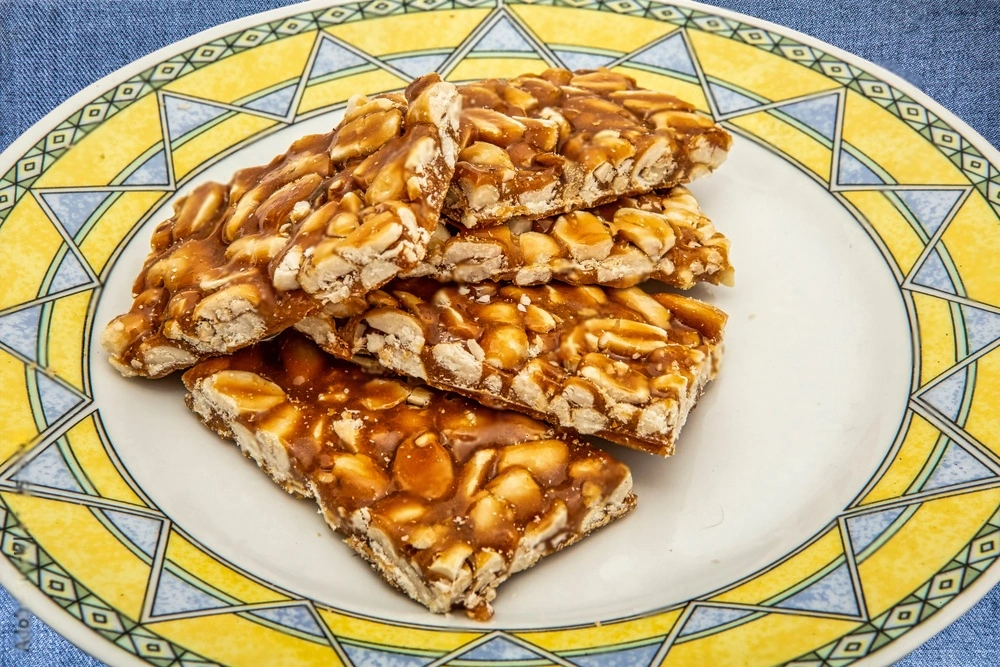Ah, the lemon loaf – a delightful treat that dances on the taste buds with its perfect blend of tangy and sweet. In this article, we take a deep dive into the world of lemon loaf, guiding you through every step of creating this zesty masterpiece. From the essential ingredients to expert baking tips, we’ve got it all covered. Whether you’re a seasoned baker or a newbie in the kitchen, this guide promises to make your lemon loaf journey a piece of cake!
Introduction to Lemon Loaf
The Popularity of Lemon Loaf
Lemon loaf, with its zesty charm and moist texture, has become a staple in cafes and home kitchens alike. It’s not just a dessert; it’s a versatile companion to your morning coffee or afternoon tea. The citrus flavor of lemon combined with a sweet, dense cake creates a harmonious balance that’s hard to resist. This treat has stood the test of time, evolving from a simple family recipe to a beloved bakery classic.
Overview of Lemon Loaf Recipes
Embarking on the lemon loaf adventure, you’ll find a plethora of recipes, each with its unique twist. Some swear by the traditional approach, emphasizing the importance of lemon zest and sour cream for that authentic, tangy lemon kick. Others experiment with modern twists, incorporating ingredients like Greek yogurt or olive oil for a different take on the classic. No matter the route you choose, the journey to the perfect lemon loaf is filled with delightful aromas and flavors, promising a sweet treat that’s both comforting and invigorating.
Ingredients and Substitutions
Key Ingredients for Lemon Loaf
When it comes to baking a moist and flavorful lemon loaf, the choice of ingredients is paramount. The foundation of this delightful cake lies in its simplicity and the quality of its components. Here’s what you’ll need:
- Eggs: They add structure and richness, essential for that fluffy texture.
- Granulated Sugar: It’s not just about sweetness; sugar also contributes to the golden crust.
- Sour Cream or Greek Yogurt: This is the secret to a moist crumb. The acidity in sour cream or yogurt tenderizes the gluten, giving you a softer loaf.
- Canola or Vegetable Oil: Oil-based cakes are known for their moistness, making the loaf tender and luscious.
- Lemon Zest and Extract: These are the stars of the show, infusing the loaf with a bright, citrus flavor.
Substitutions and Variations
Baking is both an art and a science, and there’s always room for creativity. If you’re looking to tweak the recipe or cater to dietary preferences, here are some handy substitutions:
- For Sour Cream: Vegan or lactose intolerant? Use coconut yogurt or a plant-based sour cream alternative.
- For Canola Oil: Olive oil can be a great substitute, adding a unique flavor profile, much like the Lemon Olive Oil Cake.
- For Eggs: To make it vegan, consider using flax eggs or a commercial egg replacer.
- For Lemon Extract: No extract? No problem. Increase the lemon zest or add a bit of lemon juice to compensate.
Remember, each substitution can slightly alter the final product, but that’s the beauty of baking – every iteration brings a new and exciting flavor!
Detailed Recipe Instructions
Preparing the Batter
Creating the perfect lemon loaf batter is a breeze with these simple steps. First, preheat your oven to the right temperature – usually around 350°F (175°C). This ensures a warm welcome for your batter, helping it rise beautifully.
- Whisking the Wet Ingredients: In a large bowl, combine eggs, granulated sugar, and sour cream (or Greek yogurt). Whisk them vigorously until the mixture is smooth and well-combined. This process incorporates air, making the loaf light and fluffy.
- Adding Flavor: Now, it’s time for the stars of the show – lemon zest and extract. Stir these in to infuse the batter with that irresistible citrus flavor. Remember, the quality of your lemon zest and extract will shine through in the final product.
- Mixing in the Dry Ingredients: Sift in the all-purpose flour, baking powder, and a pinch of salt. Gently fold these in until just combined. Be careful not to overmix, as this can lead to a dense loaf. A few lumps are perfectly fine and will disappear during baking.
Baking and Cooling
Pour the batter into a greased 9×5-inch loaf pan, smoothing the top with a spatula, similar to techniques used in Healthline’s baking tips.. Slide it into the preheated oven and bake for about 50-60 minutes. The key to a perfect bake is patience – resist the urge to open the oven door too often.
- Checking for Doneness: Insert a toothpick into the center of the loaf. If it comes out clean or with a few moist crumbs, your lemon loaf is ready. If not, give it a few more minutes.
- Cooling: Once done, let the loaf cool in the pan for about 30 minutes. This resting period allows the loaf to set and makes it easier to slice. Then, transfer it to a wire rack to cool completely.
Voila! You now have a beautifully baked lemon loaf, ready to be glazed and devoured.
Perfecting Lemon Loaf Icing
Icing Ingredients and Preparation
The icing on a lemon loaf isn’t just a decorative touch; it’s a crucial component that adds an extra layer of lemony sweetness. To make this delightful glaze, you’ll need:
- Confectioners’ Sugar: This fine sugar blends smoothly, creating a silky texture.
- Lemon Juice: Freshly squeezed lemon juice gives the icing its vibrant, tangy flavor.
Here’s how to whip up the perfect lemon glaze:
- Mixing the Glaze: In a small bowl, combine confectioners’ sugar with lemon juice. Start with a small amount of juice and gradually add more until you achieve a thick but pourable consistency. The glaze should be smooth and free of lumps.
- Taste and Adjust: If you prefer a tangier glaze, add a bit more lemon juice. For a sweeter glaze, add more confectioners’ sugar. It’s all about finding that sweet spot that complements the loaf.
Decoration Tips
Once your lemon loaf is completely cooled, it’s time to add the finishing touch:
- Drizzling the Glaze: Pour the glaze over the top of the loaf, letting it drip down the sides. Use a spatula or the back of a spoon to spread it evenly.
- Adding Zest: For an extra pop of lemon and a beautiful presentation, sprinkle some lemon zest over the glaze.
- Let it Set: Allow the glaze to set for a few minutes before slicing. This ensures a neat cut and a picture-perfect slice.
With these tips, your lemon loaf will not only taste delicious but also look irresistibly inviting.
Frequently Asked Questions
When it comes to baking a lemon loaf, several questions often arise. Here are some of the most common queries and their answers to help you perfect your lemon loaf.
Q: Can I make the lemon loaf gluten-free?
A: Absolutely! Substitute the all-purpose flour with a gluten-free blend. Brands like Bob’s Red Mill or Cup4Cup offer excellent alternatives. Remember, the texture might vary slightly from the traditional recipe.
Q: How can I ensure my lemon loaf is moist?
A: The key to a moist lemon loaf lies in not overbaking it and using ingredients like sour cream or Greek yogurt. These add moisture and richness to the loaf.
Q: Can I freeze the lemon loaf?
A: Yes, lemon loaf freezes beautifully. Wrap it tightly in plastic wrap and store it in the freezer for up to 3 months. Thaw at room temperature and add the glaze just before serving.
Q: What can I use if I don’t have lemon extract?
A: If lemon extract isn’t available, increase the amount of lemon zest in the recipe. You can also use a bit of lemon juice, but be cautious as it can alter the batter’s consistency.
Q: Can I add other flavors to my lemon loaf?
A: Definitely! Feel free to experiment with additions like poppy seeds, blueberries, or a hint of vanilla extract to create your own unique twist on the classic lemon loaf.
Q: How do I know when my lemon loaf is perfectly baked?
A: The loaf is done when a toothpick inserted into the center comes out clean or with a few moist crumbs. The top should be golden brown, and the loaf should spring back when lightly pressed.
Q: Can I make mini lemon loaves with this recipe?
A: Yes, this recipe can be adapted to make mini loaves. Adjust the baking time accordingly – mini loaves usually take less time to bake.
With these FAQs in your baking arsenal, you’re well-equipped to tackle any challenges and make a lemon loaf that’s sure to impress.
Expert Tips for the Best Lemon Loaf
Baking Tips
To ensure your lemon loaf turns out just right, here are some expert baking tips:
- Room Temperature Ingredients: For a smooth batter, make sure your eggs and sour cream (or Greek yogurt) are at room temperature. This helps them blend more easily, resulting in a uniform texture.
- Zest Like a Pro: When zesting lemons, only grate the outer yellow skin, not the bitter white pith beneath. The zest is packed with essential oils, offering a burst of lemony flavor.
- Don’t Overmix: Mix the batter just until the ingredients are combined. Overmixing can lead to a tough loaf.
- Oven Position: Bake the loaf in the center of the oven to ensure even cooking.
- Check for Doneness: Start checking the loaf a few minutes before the recipe’s suggested baking time. Ovens can vary, and it’s better to be safe than sorry!
Storage and Serving Suggestions
A lemon loaf is a delightful treat that can be enjoyed in various ways. Here are some suggestions for storing and serving:
- Storing: Keep the lemon loaf in an airtight container at room temperature for up to 5 days. For longer storage, freeze it without the glaze.
- Serving: Serve the lemon loaf as is, or dress it up with a dollop of whipped cream and fresh berries for an extra special touch.
- Reviving Leftovers: If the loaf dries out, lightly toast a slice and butter it for a deliciously different experience.
Remember, the best lemon loaf is the one that suits your taste. Feel free to experiment and make the recipe your own!
Creative Variations and Serving Ideas
Flavor Variations
The classic lemon loaf is a canvas for creativity. Here are some delightful twists to add a unique touch to your recipe:
- Poppy Seed Lemon Loaf: Stir in a couple of tablespoons of poppy seeds to the batter for a pleasant crunch and visual appeal.
- Blueberry Lemon Loaf: Gently fold in a cup of fresh or frozen blueberries for a burst of fruity flavor.
- Lemon Coconut Loaf: Add shredded coconut to the batter and sprinkle some on top before baking for a tropical twist.
- Herbal Infusion: Infuse the batter with fresh thyme or rosemary for a subtle, aromatic flavor that complements the lemon.
- Lemon Almond Loaf: Incorporate almond extract and top the loaf with sliced almonds for a nutty flavor.
Serving Suggestions

A lemon loaf is versatile and can be served in various delightful ways:
- Breakfast Treat: Slice and serve with a cup of coffee or tea for a refreshing start to your day.
- Dessert Option: Pair a slice of lemon loaf with a scoop of vanilla ice cream or a dollop of lemon curd for an indulgent dessert.
- Afternoon Snack: Enjoy a slice with a glass of iced tea or lemonade on a warm afternoon.
- Gift Idea: Wrap a loaf in pretty packaging to share the joy of homemade baking with friends and family.
The beauty of a lemon loaf lies in its simplicity and the joy it brings, whether you stick to the classic recipe or venture into new flavor territories.
With these creative variations and serving ideas, your lemon loaf will never be just an ordinary dessert. It’s a testament to the joy of baking and the endless possibilities it holds. Enjoy the process, savor the flavors, and most importantly, share the love that goes into every slice.





